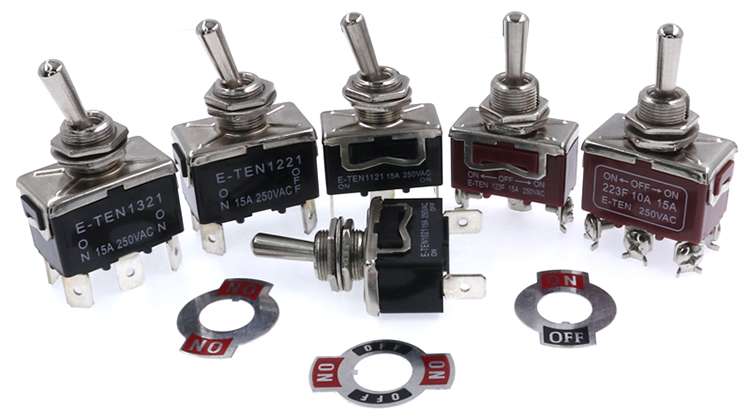We are a toggle Switch manufacturer, there are many types of toggle switches for you to choose. It's easy for you to control the electric current within a device, you just need to click a handle or lever.
We are a toggle Switch manufacturer, there are many types of toggle switches for you to choose. It's easy for you to control the electric current within a device, you just need to click a handle or lever.
4 way dpdt spring loaded metal toggle switch types

Description:
A universal workhorse with customization options to meet most needs. Rated 15A 250VAC, it has screw connection and J pin terminal connection, and circuit selection, so that the toggle switch can be easily integrated into a variety of different applications. Toggle switches can be used in the marine, food service, generator, industrial control and office automation markets, and are also suitable for low-voltage DC applications.
Features:
1. Metal toggle switch has different function: like momentary and self-locking.
2. It has different poles and contact terminal (Screw terminal, J pin terminal).
3. Different types of toggle switches: SPST (Single Pole Single throw); SPDT (single pole double throw); DPST (double pole, single throw); DPDT (double pole double throw)
4. It's easy for you to control the electric current within a device, you just need to click a handle or lever.
Application:
It is a hinge switch that can assume two positions-ON and OFF. Due to its ease of operation, toggle switches can be used in many different applications. They are used in commerce and household appliances, and are often used as light-controlled switches.
FAQ:
1. How should we use a toggle switch?
The designers are easy to confuse toggle switches and toggle buttons cause they are both manage state, but there are fundamental differences. The switch is used for status and the button is used for operation.
The switch itself is an activated "button", which does no need for a separate switch button.
2. What is the conditions for Using toggle switch?
1) Application system state, not context state. (The context state only affects the currently focused screen, while the system state is valid anywhere in the application.)
2) Present binary options, not the other way around. (binary options represent a single state, either on or off-or in other words, true or false.)
3) Activate a state instead of performing an action.
 Request for Quotation
Request for Quotation
